
Old players, new players and plenty of change in AFT’s opening four rounds – and plenty of action, too!
Words by Sammy Sabedra
Photos by Sabedra, Kristen Lassen, Scott Hunter
Those of you who pay attention to the racing side of the American V-Twin scene probably know who won the opening four American Flat Track events of 2020 – a pair of Half-Miles at Barberville, Florida’s Volusia Speedway Park on July 17 and 18, and two Miles at the legendary Indianapolis Fairgrounds on August 21 and 22.
Ex-Grand National champ Jared Mees ran away with those races both nights at Volusia in the premier (and newly-named) SuperTwins division, with Australian Max Whale and 16-year old Dallas Daniels taking the AFT Singles mains, respectively. Ryan Varnes and reigning champ Cory Texter traded wins in the Production Twins events, with Latus Motors’ James Rispoli grabbing second on both nights on the Team Latus Harley-Davidson XG750R.
Indian’s Briar Bauman grabbed both Indy Mile wins on what’s likely to be the final two Miles run at that legendary facility (cementing his place in history as one of the few riders to achieve the rare Grand Slam in the process, which encompasses wins on Short Track, TT, Half Mile and Mile in one’s flat track career). Still, on night number two he had his hands full with teammate Mees and Harley-Davidson/Vance & Hines rider Bryan ‘Mile Master’ Smith, both of whom led during periods of the SuperTwins Main event. Mees ended up second, but Smith was right there for third, which hasn’t happened in a premier-class Main and which had Harley fans everywhere screaming in delight. James Rispoli put the Team Latus XG750R on the box both nights in Production Twins, with a solid second behind winner Ben Lowe on Friday and a runaway, 12-second win on Saturday night, which only added to Harley fans’ glee. Singles-division Mains were won by privateer Brandon Kitchen (who was loaned a Vance & Hines dyno mule!) and RMR pilot Henry Wiles, respectively.
Many of you also are probably aware of the new rules and format changes for 2020, as well (which are considerably more involved than simply the AFT Twins-to-AFT SuperTwins name change), but here’s a primer just in case. In the SuperTwins division you’ve got 16 elite teams in the mix every weekend (no qualifying for the Main now), with Main-event grid positions determined by qualifying, and there’s the option of adding two wild card entries at each event. Main events for all three classes are now timed races instead of a set number of laps, which will result in longer Main events – which is harder on the riders but more exciting for spectators and viewers. Grids are now comprised of four bikes per row, and there’s an all-new spec tire this year – Dunlop’s all-new DT4.
That’s a mouthful of dirt…er, change. But to give you some insight into the effect these changes had on the riders at the opening four rounds of this Covid-challenged professional flat track season, we enlisted Sammy Sabedra – an ex-racer himself and current crew chief for Production Twins rider Ryan Varnes – to give us the inside scoop from the paddock.
—Mitch Boehm, Editor-in-Chief

It’s true. American Flat Track is undergoing some serious change this year, and it’s arguable that since the inception of the Championship back in the 1950s, the sport has never really seen this much wholesale change.
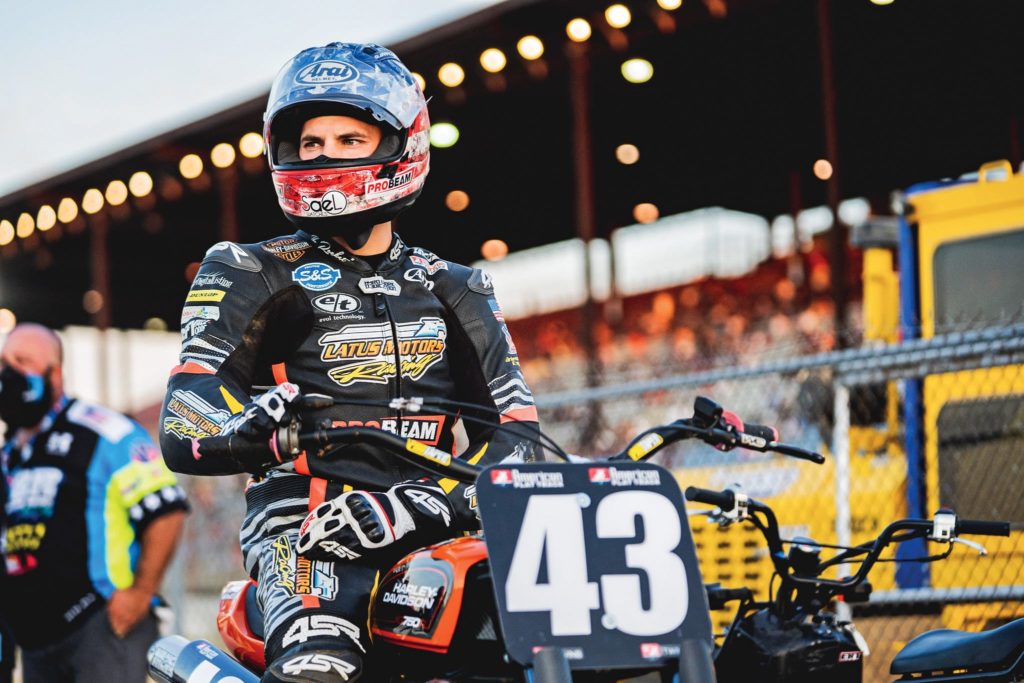
Let’s talk race distances
Main events will now be timed events instead of a specific number of laps, with the racetrack size determining the amount of time. With the old format there would be roughly an eight-minute difference between a Short Track and Mile national. The main reasoning behind this change is a more consistent package, which makes things a lot easier when it comes to the all-important television coverage. A by-product is more excitement for fans and more racing to experience….and what’s not to love about that?
How much more racing can fans expect to see? Well, last year a Twins Main on a Half-Mile was 25 laps. This year, the SuperTwins Main ran 38 laps on night two at Volusia, while the Singles and Production Twins ran closer to the traditional 25 laps of last year’s premier class. Team Harley-Davidson’s Jarod Vanderkooi said the longer laps were “more mentally tiring than anything.”
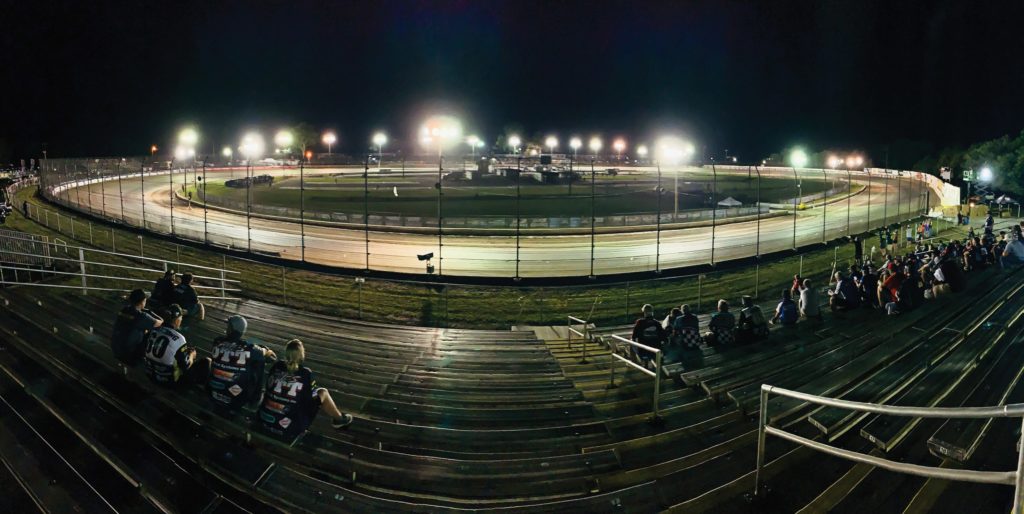
Overall, riders didn’t seem to mind the extra laps, but remember, these are world-class athletes. It’ll be interesting to see how this plays on some of the other tracks AFT visits. Instead of counting laps, riders will now have to plan strategy via a large digital clock displayed along the front straightaway, along with a two-lap-to-go signal from the starter. This opens up a whole new dynamic, and on smaller tracks lapped traffic is likely to play a factor.
Of course, then there’s Lima, where making tears-offs last 25 laps is already an issue…
How about tires?
Dunlop’s new DT4 spec tire offers a completely new tread design along with a much-modified carcass for 2020 and is available in medium (R5) and hard (R9) compounds instead of the soft (R5), medium (R8) and hard (R10) compounds offered previously. This means riders in all three classes are in uncharted waters in terms of traction and wear, as no team will start the season with years’ worth of data – so it’s a level playing field for everyone.
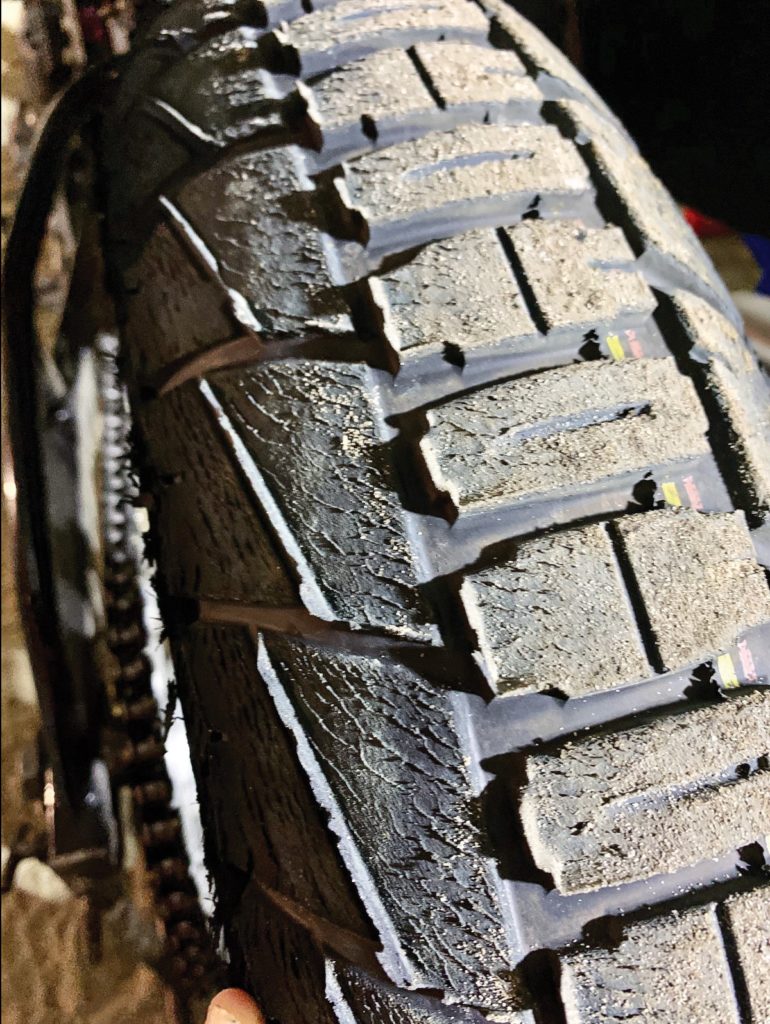
Most teams did some testing during the off-season and long Covid-19 break, and most riders seemed happy with the tires’ overall performance. At Volusia the softer R5 provided the necessary grip to keep pace at the top of the time charts on short-distance runs during qualifying and semis (the R9s were too hard there), but the big question was this: Would the rears make the race distance of a Main event? In the end they did, with one person on the R5s, although making them last meant managing tire wear a bit more than anticipated. More strategy for the riders here.
At Indy, the harder R9 Dunlops were mandated, so everyone was on equal footing, and no one had to worry about conserving their tires in a main event. The only variables were tire pressure and whether to run brand-new tires (with full-sized lugs and sharp edges) or ones with some wear in the Main, the thinking being that a slightly (or significantly) worn tire that’s been run-in and heat-cycled would warm up faster or offer more grip. To me it seemed about a 50/50 split on new vs. worn, though I did notice Jeffrey Carver Jr. using quite well-worn tires during the weekend. The Wizard is always searching for that extra little bit! Riders were experimenting with tire pressures, too, but the feeling I got by the end of both nights was that teams stayed with the pressures they typically run – right around 26 pounds. The lower pressures allowed the tires to squirm a bit more, which on the Indy track – which had lots of grooves and rough, uneven spots – caused stability and weave problems for some riders. Some teams used tire warmers on their R9s, too, in hopes the warmer carcass would heat up and ‘come in’ a bit more quickly.
More on Carver: He’d modified his bike’s shifting mechanism, too, allowing him to downshift with his right foot after he’d tossed the bike into the corner (extremely difficult to do with your left foot in that situation). He ended up seventh both nights, pretty respectable in a field as strong as this, so it’s hard to tell if it hurt or helped.
Starting line grids
If longer races and new tires weren’t enough to think about, riders had to also consider a new grid format featuring rows of four instead of five or six, the idea being less congestion in the very busy first turn on lap one. Opinions here were split. “It seemed a little safer and less congested,” said SuperTwins rider Sammy Halbert, “and you could still make something happen from the back row.” Productions Twins rider Ryan Varnes had this to say: “It added a lot of pressure to qualifying, as I knew how important it was to get into the top two to have that front row start.” Although we may need more time to see how riders adapt to this new format, one thing is certain: Fast qualifying times are more important than ever, which means qualifying sessions just got a whole lot more interesting.
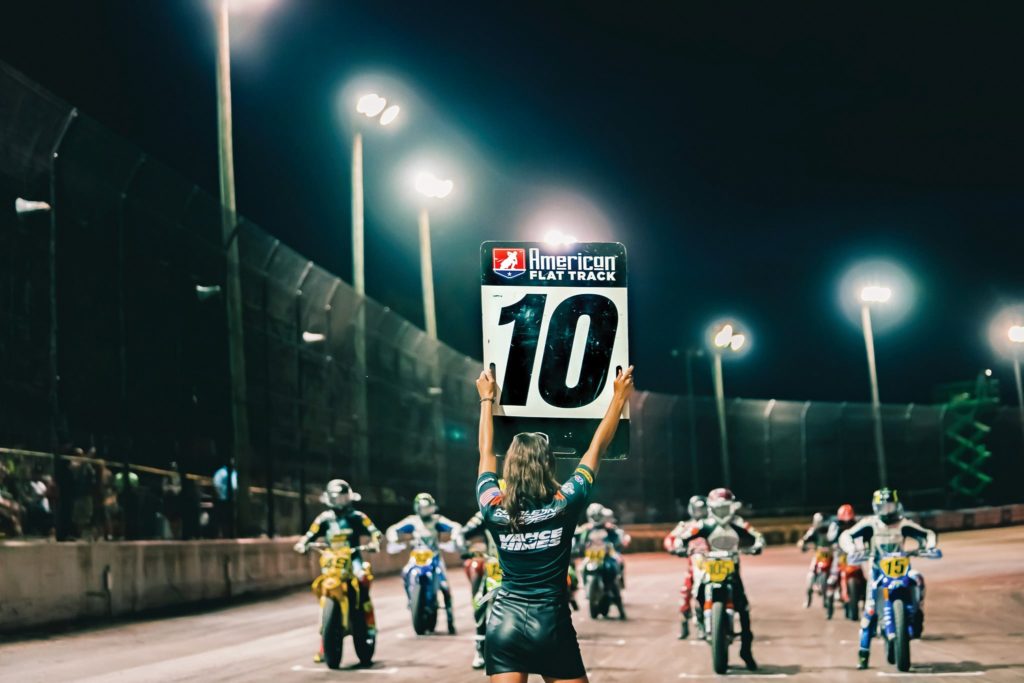
Talk about high-end presentation!
It was really strange to have no interaction with fans due to Covid, as they are such a big part of our sport, but paddocks in both Florida and Indiana had a sense of professionalism and grandeur they’ve not had before. It was like we were at an elite-level sports event. The way organizers broke up the pits – separating everyone by class – gave a special distinction to each racing division. The SuperTwins teams, with their big rigs and signage and banners, really stood out. Seeing them lined up together gave the event a super-professional and highly elite look and feel. When the fans end up coming back they’re gonna love it, but we in the paddock will continue to enjoy it and take pride in it in the meantime!
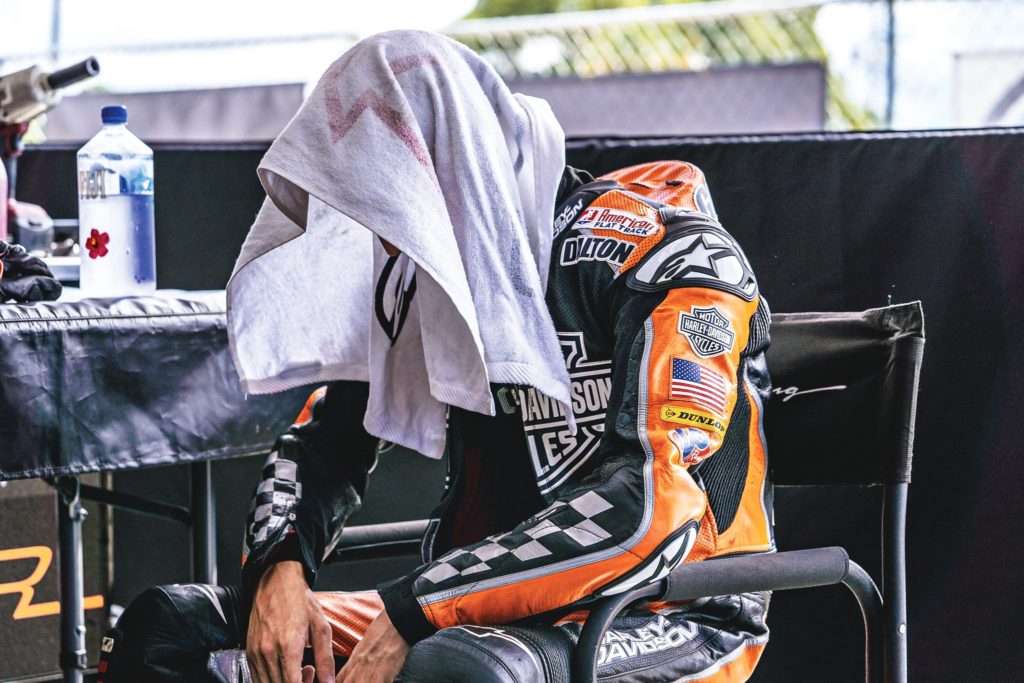
Race day operations and track prep
The AFT crew’s performance over the two weekends was pretty darn good. Things ran like a well-oiled machine throughout and the overall feel and vibe of the events brought a level of professionalism the sport has long needed. Track prep was quite good at Volusia despite the heat, though conditions at Indy were seriously less-than-optimal, especially on the first night when the groove was narrow and slick after they broomed the groove after dark and the moisture came up. Riders were not happy, though Saturday night was a bit better. The crew seemed to be behind the eight ball all weekend long on track prep at Indy, and maybe it was because the dirt had sat without being worked for so long. It was grooved and rutted and holes formed, which is never good. The ‘flat’ in flat track says ‘smooth racetrack’ to outsiders, but often it simply isn’t the case, and the Indy Mile – which has typically been a fantastic venue over the years, with a nice, loose cushion – was a good example of how things can go wrong. Getting the track just right is never easy, and it seems there’s always gonna be variations in grip and consistency from night to night and venue to venue. Of course, everyone has to race on the same surface, right? So that’s the equalizer in all of this.

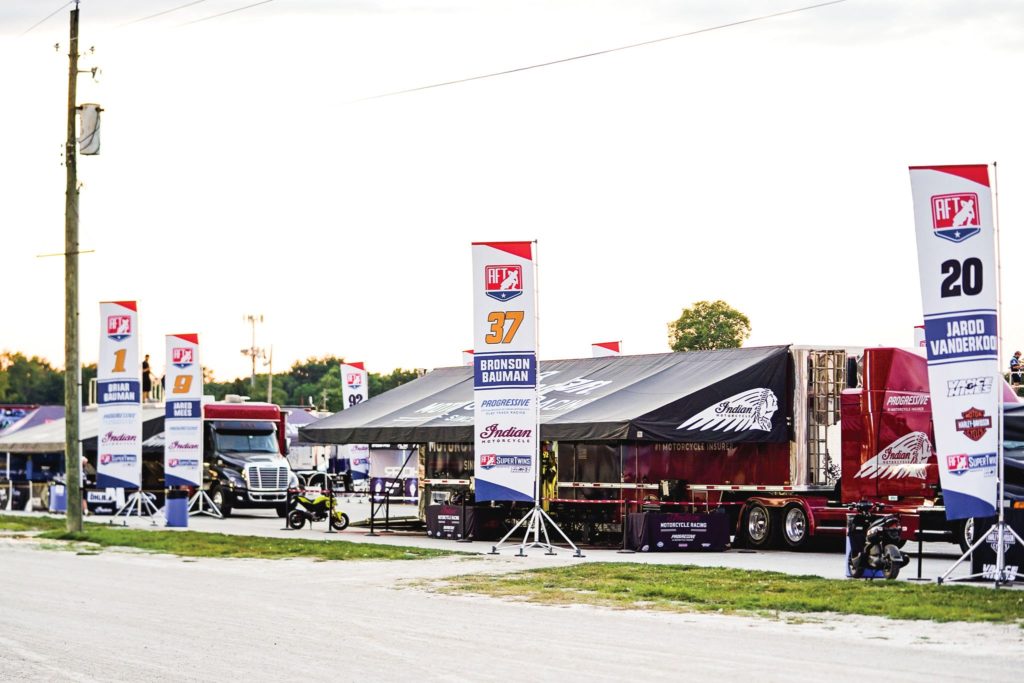

What about the Vance & Hines Harleys?
In general, I expect the Harley-Davidson team to be closer to the front this year, as do a lot of folks, especially with the additions of savvy crew chief Ricky Howerton and rider Bryan Smith, who’s truly a Mile Master. The team didn’t fare too well at Volusia, with the trio of Smith, Jarod Vanderkooi and Gauthier ending up barely in the top ten on Friday and well out of it on night number two. But at Indy Smith came alive, winning his Semi on Friday (though sagging to sixth in the Main) and rebounding on Saturday to qualify fourth, grab third in his Semi and then chasing Bauman and Mees all the way to the flag in the Main, and even leading some laps. It’s just one race, but Smith being able to run with what are arguably the two fastest guys in the SuperTwins division certainly bodes well for his and the Team’s chances going forward, especially with the Springfield Mile doubleheader coming up on September 4 and 5. They don’t call Smith the ‘Mile Master’ for nuthin.
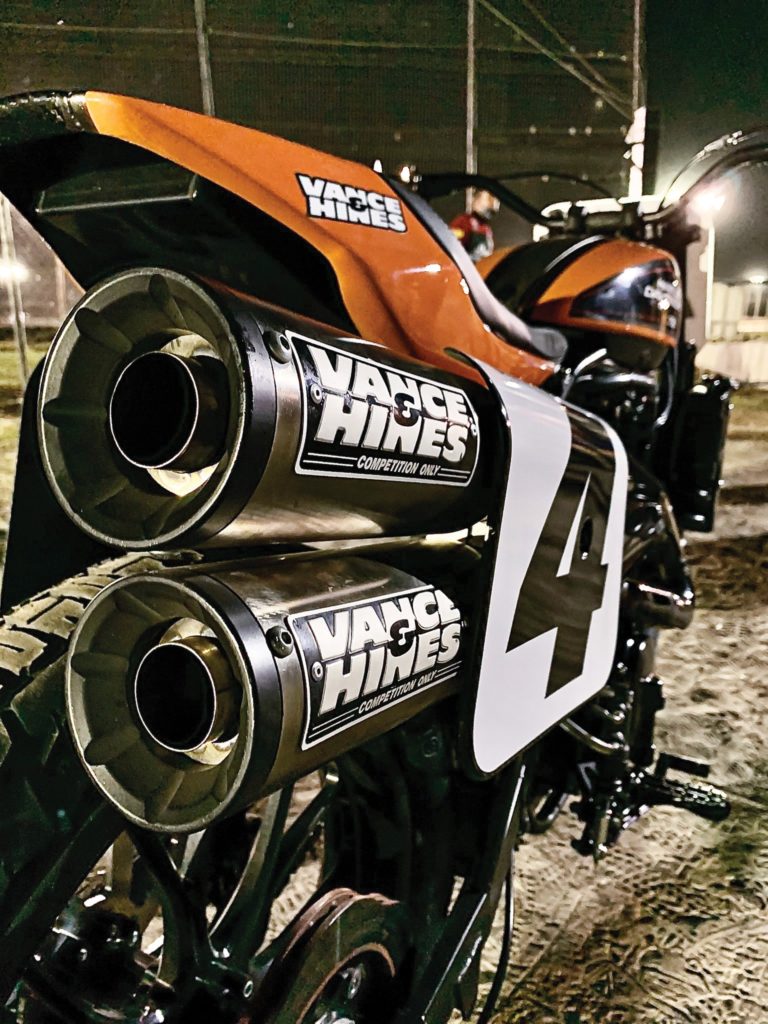
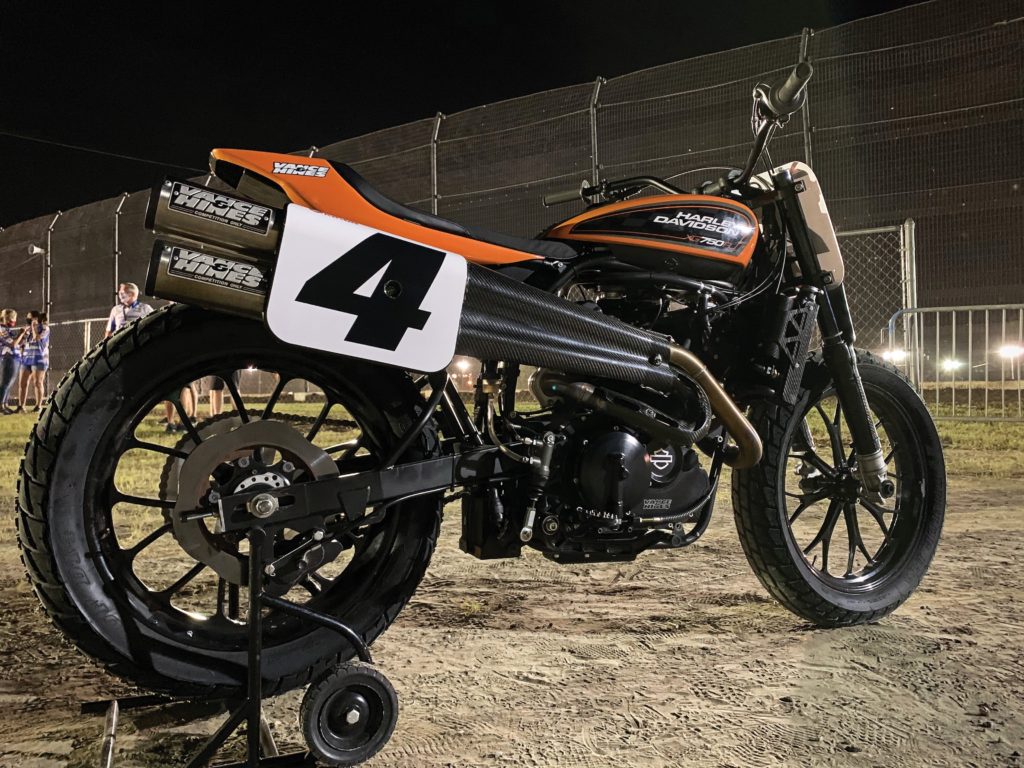
In Production Twins, James Rispoli was super-competitive on his Latus Motors Racing XG both weekends, running fast lap times and being really consistent. He grabbed two seconds at Volusia, took runner-up honors again on Friday night at Indy, and then disappeared into the darkness on Saturday night, winning by more than 12 seconds. Harley fans were ecstatic.
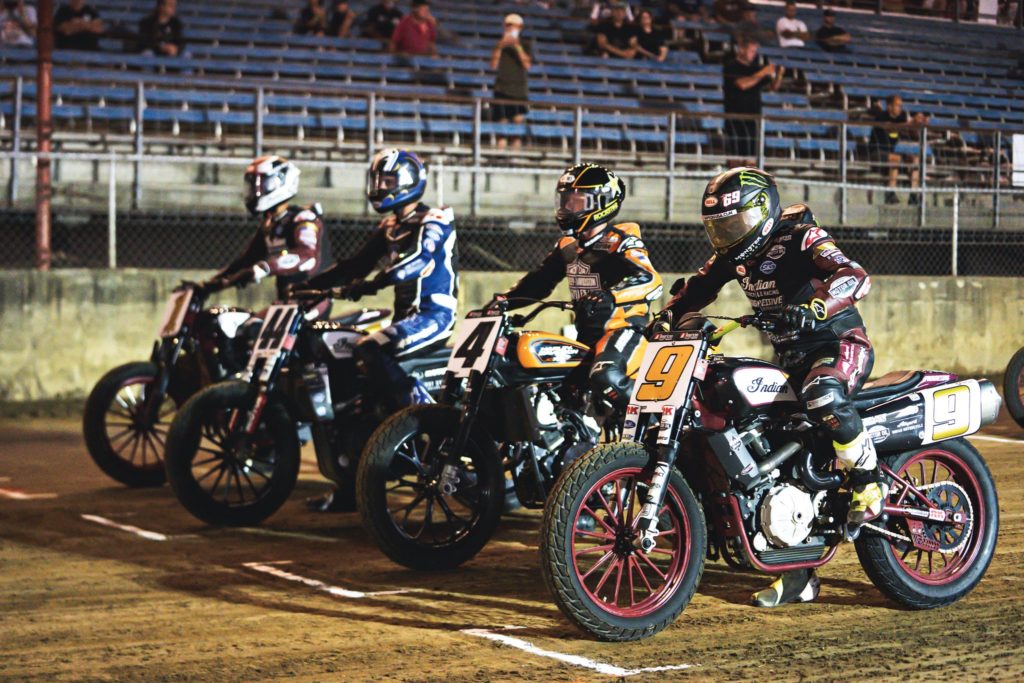
Until Bryan Smith broke through with some combination of engine and chassis setup to match the speed of front runners Mees and Bauman, there’s been a good amount of speculation on what was up with the factory Harleys. For what it’s worth, I noticed Rispoli was running a 2-into-1 exhaust on one of his bikes, while the factory guys were all using 2-into-2s. It’s simplistic to mention this as a possible reason, and the bikes are different, especially in terms of cylinder-head design. But a 2-into-1 does typically choke down power a little in places in the power curve, and after speaking with Chad Cose (who’s riding an XG and who’s run up front on an Indian previously), the Harleys are really powerful and do have a pretty strong midrange hit. So some wondered…Is Rispoli’s pipe helping him get off the corners a bit better? Or maybe it’s just Rispoli himself – along with him having veteran Joe Kopp in his corner? It’s hard to know at this point in the season, and hard to know if Smith, Gauthier and Vanderkooi’s factory bikes will keep improving (a good bet, most think), but it’s worth watching.


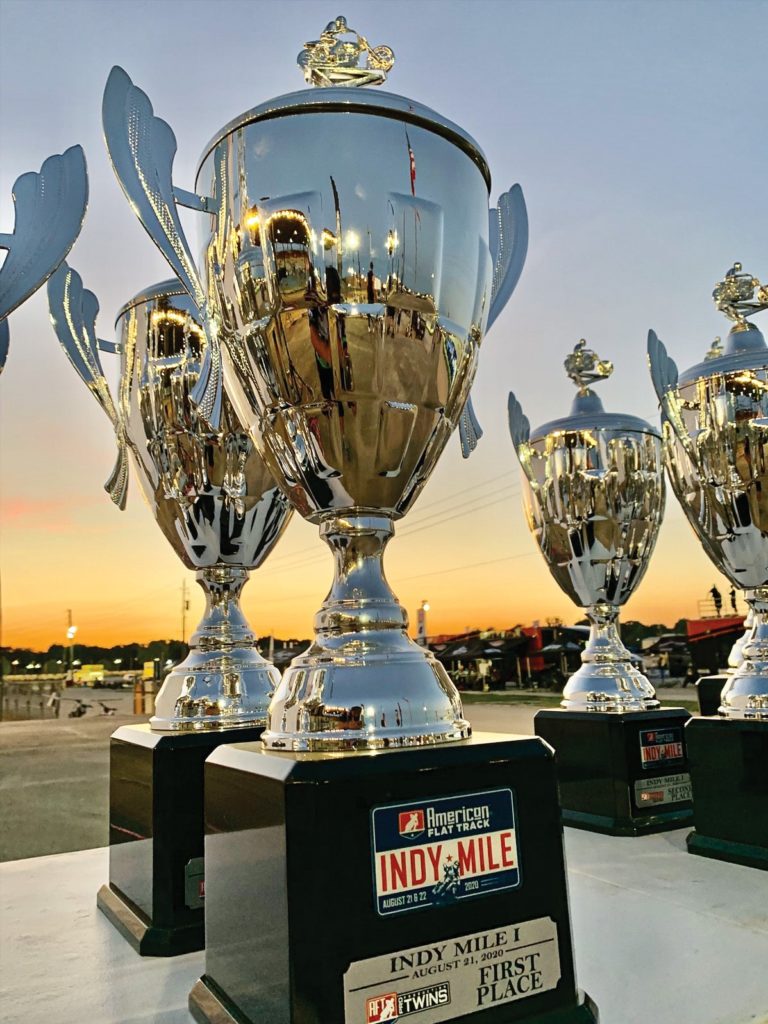

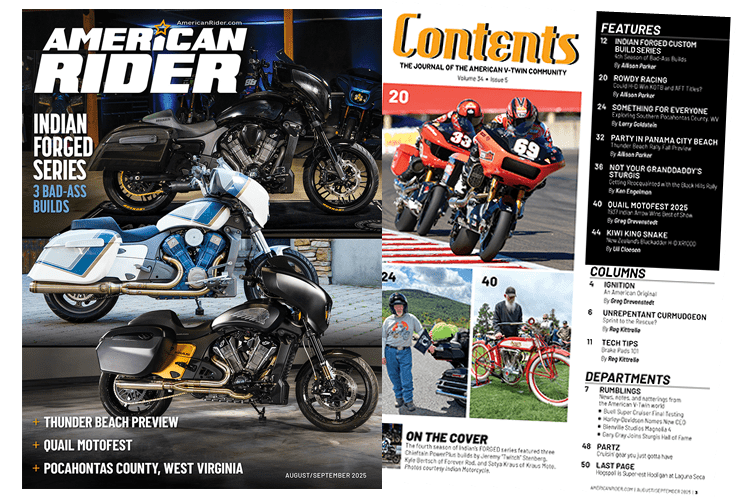
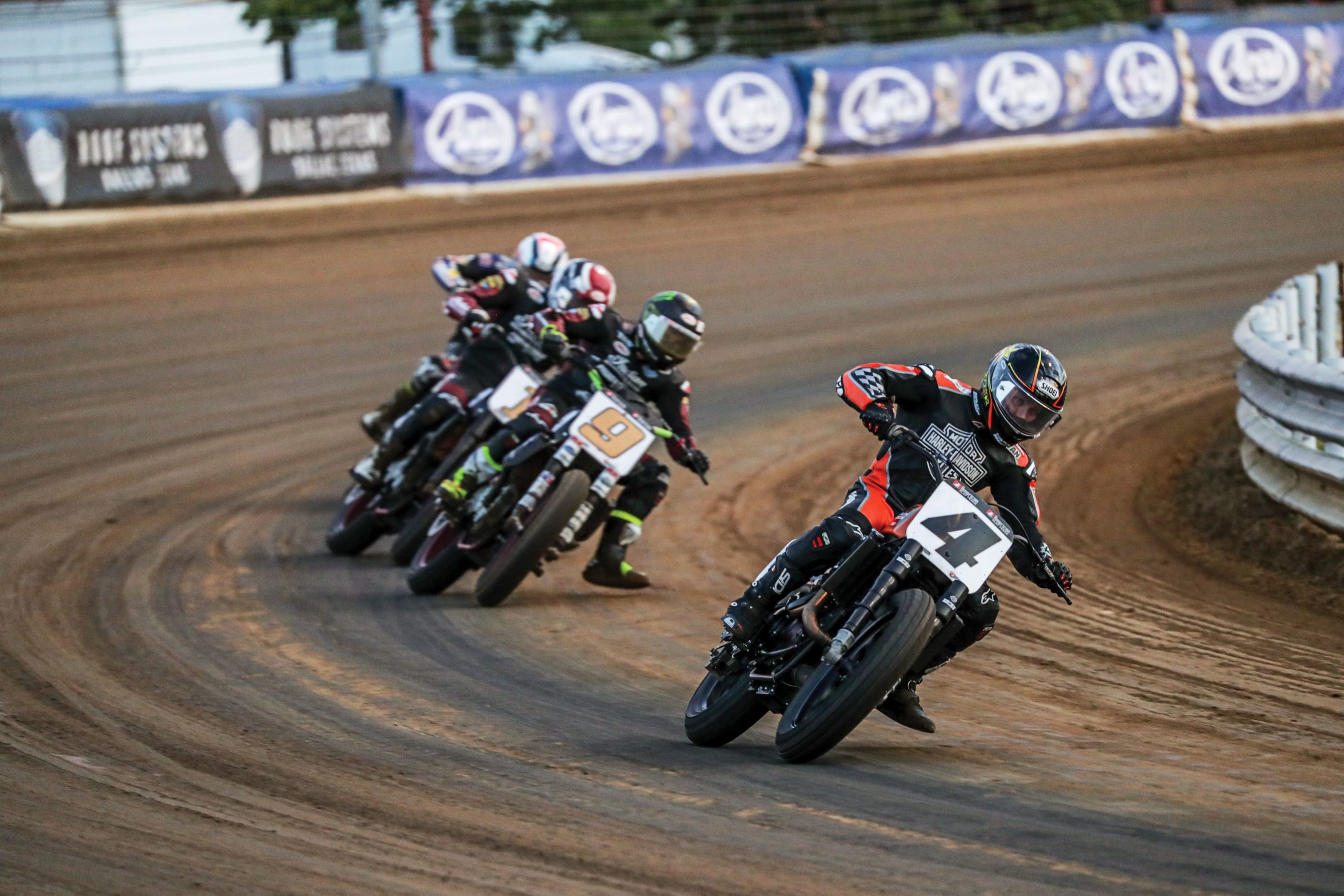
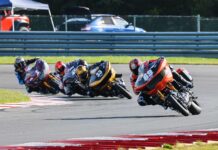

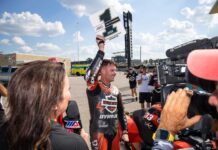
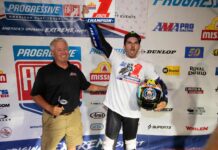
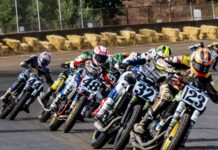
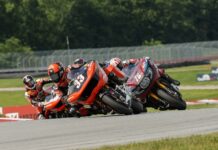










Well done!!
Awesomely Done……!!!
Great read
Thank you
God Bless